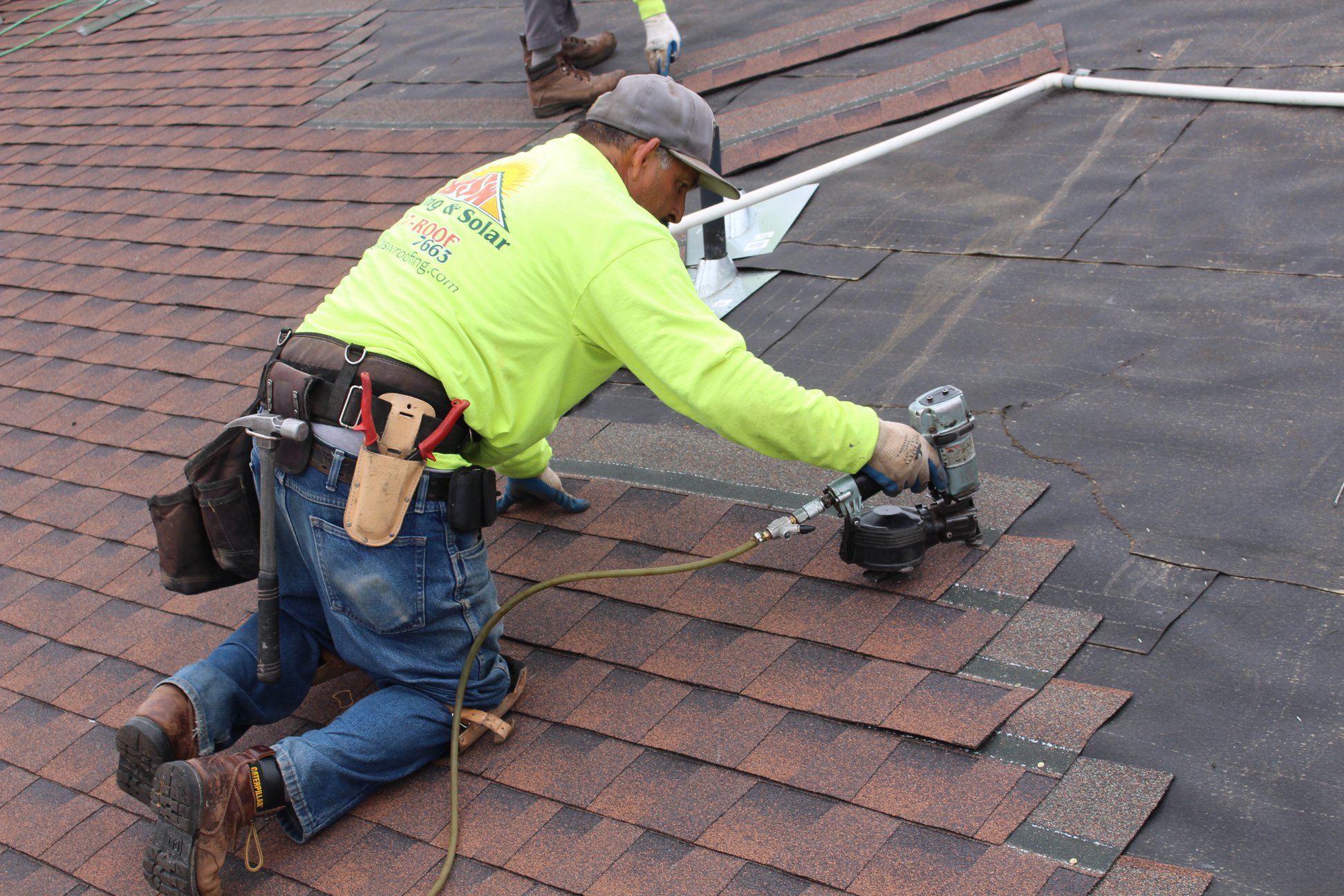Finest Practices for Ensuring Proper Roofing Ventilation
Ensuring appropriate roof covering ventilation is critical for the long life and performance of a roof covering system. A well balanced consumption and exhaust vent ratio, commonly 1:300, plays a crucial role, with consumption vents ideally put at the lower side of the roof for cool air entry and exhaust vents at the height for warm air departure. Routine evaluations to identify blockages and keep clear air flow are vital. In addition, keeping insulation away from vents is essential to stop air movement restriction. Understanding these fundamental aspects establishes the phase for even more thorough insights right into installation and upkeep techniques that can dramatically enhance your roof's performance.
Understand Ventilation Essentials
Effectively recognizing ventilation basics is crucial for making certain the long life and efficiency of roof. Reliable air flow reduces wetness accumulation and temperature level extremes in the attic room, both of which can result in significant architectural damages gradually. A well-ventilated roof aids in protecting against usual issues such as mold and mildew development, timber rot, and ice dams, which can jeopardize the stability of the roofing products and the underlying structures.
The key objective of air flow is to help with the movement of air, enabling for a regular exchange in between the outside and indoor settings. This balance is accomplished via a combination of intake and exhaust vents that function together to preserve optimal airflow. Intake vents, normally situated along the eaves or soffits, permit fresh air to get in the attic area, while exhaust vents, frequently situated at or near the roof ridge, make it possible for hot, humid air to escape.
Trick elements affecting the performance of roofing system air flow consist of correct positioning, sufficient sizing, and making sure that both intake and exhaust vents are unobstructed. Regular examination and maintenance are critical to recognize prospective obstructions, damage, or ineffectiveness in the ventilation system, therefore protecting the roof's efficiency and sturdiness.
Kinds Of Roofing Vents
Roof vents play an essential role in keeping effective attic room ventilation and, by extension, the general health of the roofing system. Different kinds of roofing system vents are available, each with special advantages tailored to certain roof requirements. Ridge vents, for instance, are set up along the roofing system's height, allowing cozy, humid air to run away from the attic. They use continual ventilation and blend perfectly with the roofline, making them both efficient and aesthetically pleasing.

Soffit vents are set up under the eaves and job in tandem with roof vents to make certain a balanced consumption and exhaust system. By permitting cooler air to enter from below, soffit vents facilitate the expulsion of warm air through top vents. Gable vents, located on the outside wall surfaces of the attic, deal an additional efficient remedy, especially in homes with saddleback roofs.
Examine Your Current Air Flow

Next, consider the age and problem of your roof covering products and air flow parts. Older systems might not follow current building regulations or may have weakened in time, reducing their effectiveness. Conduct an extensive assessment to determine any kind of indications of damage, such as rust, damage, or voids that might endanger the system's performance.
Additionally, measure the attic room temperature and humidity levels. High temperatures and humidity can indicate inadequate air flow.
Setup Best Practices
Reliable installation of roofing ventilation systems is critical for making certain optimal performance and long life. Appropriate setup begins with recognizing the certain air flow requirements of the structure and the roof covering it covers. This involves calculating the correct ratio of intake to wear down vents, normally adhering to the 1:300 regulation, which specifies one square foot of ventilation for every 300 square feet of attic floor space.

Consumption vents need to be mounted at the roofing system's reduced edge, usually in the soffits, to allow great air to enter. Exhaust vents, on the other hand, ought to be set up near or at the roofing system's optimal to help with the leave of warm, moist air.
Seal all air vent connections carefully to stop air leaks and prospective water infiltration. Usage top notch materials and follow maker guidelines to make sure longevity and efficiency. Furthermore, incorporating ridge vents with baffles can significantly improve airflow effectiveness by protecting against wind-driven rainfall and snow from getting in the attic.
Eventually, specific setup of roof covering air flow systems reduces possible problems such as mold development, ice dams, and structural damages, making certain the roof's integrity and the building's total health.
Routine Maintenance Tips
Uniformity in upkeep techniques is essential to making sure the lasting efficiency of roof ventilation systems. Regular assessments are crucial, ideally performed biannually-- in the spring and autumn. Throughout these assessments, ensure that vents are without that site particles, nests, and various other blockages that could hamper airflow. Inspect for any kind of indicators of wetness build-up or mold and mildew, as these can suggest incorrect air flow or leaks (gainesville roofing companies).
Use a soft brush or a vacuum cleaner to get rid of dust and particles from intake and exhaust vents. Be mindful not to harm the vent displays or louvers throughout the procedure.
Proper insulation is similarly essential. Make certain that attic insulation does not block the vents, as this can badly limit air flow. If any type of insulation has actually shifted or worked out, reposition or change it to maintain an efficient barrier.
Last but not least, replace any kind of damaged or missing out on elements immediately. Damaged vents, cracked shingles, or shabby blinking can all add to inadequate air flow and ought to be addressed without hold-up. Routine maintenance ensures that the roof covering air flow system operates efficiently, therefore extending the life expectancy of the roof covering itself.
Verdict
Guaranteeing correct roofing air flow is paramount for preserving the efficiency and toughness of a roof. Adherence to the 1:300 consumption and exhaust vent proportion, combined with the strategic positioning of vents, is essential. Normal biannual evaluations, debris cleansing, and making sure insulation does not obstruct air movement are vital practices. Implementing these finest practices will foster a well-ventilated roofing system, therefore alleviating prospective concerns connected to moisture buildup and too much heat, ultimately prolonging the roof covering's life expectancy.
A well balanced consumption and exhaust air vent proportion, typically 1:300, plays an essential role, with consumption vents ideally put at the reduced side of the roofing system for cool air entrance and exhaust vents at the top for cozy air departure. Intake vents, usually located along the eaves or soffits, allow fresh air to enter the attic room room, while exhaust vents, commonly located at or near the roofing system ridge, enable hot, moist air to escape.
Soffit vents are set up under the eaves and work in tandem with roof covering vents to guarantee a balanced intake and exhaust system. By permitting visit site cooler air to enter from below, soffit vents facilitate the expulsion of warm air with top vents. Adherence to the 1:300 intake and exhaust vent ratio, coupled with the calculated positioning of vents, is crucial.